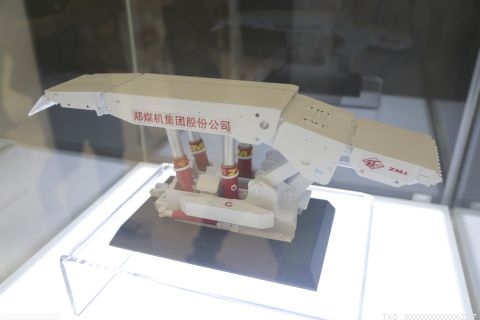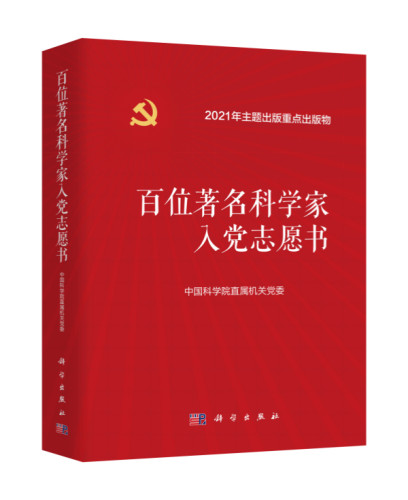如何从历史数据中找出规律,去预测用户未来的购买需求,让最合适的商品遇见最需要的人,是大数据应用在精准营销中的关键问题,也是所有电商平台在做智能化升级时所需要的核心技术。
京东作为中国最大的自营式电商,沉淀了数亿的忠实用户,积累了海量的真实数据。本案例以京东商城真实的用户、商品和行为数据(脱敏后)为基础,通过数据挖掘的技术和机器学习的算法,构建用户购买商品的预测模型,输出高潜用户和目标商品的匹配结果,为精准营销提供高质量的目标群体,挖掘数据背后潜在的意义,为电商用户提供更简单、快捷、省心的购物体验。
 (资料图片)
(资料图片)
本案例以京东高潜用户购买意向预测问题为例,使用 OpenMLDB 进行数据挖掘,使用 OneFlow 中的 DeepFM 模型进行高性能训练推理,提供精准的商品推荐,从而打造一个完整的机器学习应用。
本案例基于 OpenMLDB 集群版进行教程演示。注意,本文档使用的是预编译好的 docker 镜像。如果希望在自己编译和搭建的 OpenMLDB 环境下进行测试,推荐针对 OpenMLDB 优化的 Spark 发行版。(参考章节:
https://openmldb.ai/docs/zh/main/deploy/compile.html)
1
环境准备和预备知识
OneFlow 工具包安装
OneFlow 工具依赖 GPU 的强大算力,所以请确保部署机器具备 Nvidia GPU,并且保证驱动版本 >=460.X.X 驱动版本需支持 CUDA 11.0。
使用以下指令安装 OneFlow:
conda activate oneflowpython3 -m pip install --pre oneflow -f https://staging.oneflow.info/branch/support_oneembedding_serving/cu102
还需要安装以下 Python 工具包:
pip install psutil petastorm pandas sklearn
拉取和启动 OpenMLDB Docker 镜像
注意,请确保 Docker Engine 版本号 >= 18.03
拉取 OpenMLDB docker 镜像,并且运行相应容器
映射demo文件夹至/root/project,这里我们使用的路径为demodir=/home/gtest/demo
export demodir=/home/gtest/demodocker run -dit --name=demo --network=host -v $demodir:/root/project 4pdosc/openmldb:0.5.2 bashdocker exec -it demo bash
上述镜像预装了OpenMLDB的工具等,我们需要进一步安装Oneflow推理所需依赖。
因为我们将在OpenMLDB的服务中嵌入OneFlow模型推理的预处理及调用,需要安装以下的依赖。
pip install tritonclient[all] xxhash geventhttpclient
注意,本教程以下的 OpenMLDB 部分的演示命令默认均在该已经启动的 docker 容器内运行。OneFlow 命令默认在 1.1 安装的 OneFlow 环境下运行。
初始化环境
./init.sh
我们在镜像内提供了init.sh脚本帮助用户快速初始化环境,包括:
配置 zookeeper
启动集群版 OpenMLDB
启动 OpenMLDB CLI 客户端
/work/openmldb/bin/openmldb --zk_cluster=127.0.0.1:2181 --zk_root_path=/openmldb --role=sql_client
注意,本教程大部分命令在 OpenMLDB CLI 下执行,为了跟普通 shell 环境做区分,在 OpenMLDB CLI 下执行的命令均使用特殊的提示符 `>` 。
预备知识:集群版的非阻塞任务
集群版的部分命令是非阻塞任务,包括在线模式的 LOAD DATA,以及离线模式的 LOAD DATA,SELECT,SELECT INTO命令。提交任务以后可以使用相关的命令如 SHOW JOBS, SHOW JOB来查看任务进度,详情参见离线任务管理文档。
2
机器学习训练流程
使用OpenMLDB+OneFlow进行机器学习训练可总结为以下大致步骤。
接下来会介绍每一个步骤的具体操作细节。
使用OpenMLDB进行离线特征抽取
创建数据库和数据表
以下命令均在 OpenMLDB CLI 环境下执行。
> CREATE DATABASE JD_db;> USE JD_db;> CREATE TABLE action(reqId string, eventTime timestamp, ingestionTime timestamp, actionValue int);> CREATE TABLE flattenRequest(reqId string, eventTime timestamp, main_id string, pair_id string, user_id string, sku_id string, time bigint, split_id int, time1 string);> CREATE TABLE bo_user(ingestionTime timestamp, user_id string, age string, sex string, user_lv_cd string, user_reg_tm bigint);> CREATE TABLE bo_action(ingestionTime timestamp, pair_id string, time bigint, model_id string, type string, cate string, br string);> CREATE TABLE bo_product(ingestionTime timestamp, sku_id string, a1 string, a2 string, a3 string, cate string, br string);> CREATE TABLE bo_comment(ingestionTime timestamp, dt bigint, sku_id string, comment_num int, has_bad_comment string, bad_comment_rate float);
也可使用 sql 脚本(/root/project/create_tables.sql)运行:
/work/openmldb/bin/openmldb --zk_cluster=127.0.0.1:2181 --zk_root_path=/openmldb --role=sql_client < /root/project/create_tables.sql
离线数据准备
首先,切换到离线执行模式。接着,导入数据作为离线数据,用于离线特征计算。
以下命令均在 OpenMLDB CLI 下执行。
> USE JD_db;> SET @@execute_mode="offline";> LOAD DATA INFILE "/root/project/data/JD_data/action/*.parquet" INTO TABLE action options(format="parquet", header=true, mode="append");> LOAD DATA INFILE "/root/project/data/JD_data/flattenRequest_clean/*.parquet" INTO TABLE flattenRequest options(format="parquet", header=true, mode="append");> LOAD DATA INFILE "/root/project/data/JD_data/bo_user/*.parquet" INTO TABLE bo_user options(format="parquet", header=true, mode="append");> LOAD DATA INFILE "/root/project/data/JD_data/bo_action/*.parquet" INTO TABLE bo_action options(format="parquet", header=true, mode="append");> LOAD DATA INFILE "/root/project/data/JD_data/bo_product/*.parquet" INTO TABLE bo_product options(format="parquet", header=true, mode="append");> LOAD DATA INFILE "/root/project/data/JD_data/bo_comment/*.parquet" INTO TABLE bo_comment options(format="parquet", header=true, mode="append");
或使用脚本执行:
/work/openmldb/bin/openmldb --zk_cluster=127.0.0.1:2181 --zk_root_path=/openmldb --role=sql_client < /root/project/load_data.sql
并通过以下命令快速查询 jobs 状态:
echo "show jobs;" | /work/openmldb/bin/openmldb --zk_cluster=127.0.0.1:2181 --zk_root_path=/openmldb --role=sql_client
注意,集群版 `LOAD DATA` 为非阻塞任务,可以使用命令 `SHOW JOBS` 查看任务运行状态,请等待任务运行成功( `state` 转至 `FINISHED` 状态),再进行下一步操作 。
特征设计
通常在设计特征前,用户需要根据机器学习的目标对数据进行分析,然后根据分析设计和调研特征。机器学习的数据分析和特征研究不是本文讨论的范畴,我们将不作展开。本文假定用户具备机器学习的基本理论知识,有解决机器学习问题的能力,能够理解 SQL 语法,并能够使用 SQL 语法构建特征。针对本案例,用户经过分析和调研设计了若干特征。
请注意,在实际的机器学习特征调研过程中,科学家对特征进行反复试验,寻求模型效果最好的特征集。所以会不断的重复多次特征设计->离线特征抽取->模型训练过程,并不断调整特征以达到预期效果。
离线特征抽取
用户在离线模式下,进行特征抽取,并将特征结果输出到"/root/project/out/1"目录下保存(对应映射为$demodir/out/1),以供后续的模型训练。 SELECT命令对应了基于上述特征设计所产生的 SQL 特征计算脚本。以下命令均在 OpenMLDB CLI 下执行。
USE JD_db;select * from(select`reqId` as reqId_1,`eventTime` as flattenRequest_eventTime_original_0,`reqId` as flattenRequest_reqId_original_1,`pair_id` as flattenRequest_pair_id_original_24,`sku_id` as flattenRequest_sku_id_original_25,`user_id` as flattenRequest_user_id_original_26, distinct_count(`pair_id`) over flattenRequest_user_id_eventTime_0_10_ as flattenRequest_pair_id_window_unique_count_27, fz_top1_ratio(`pair_id`) over flattenRequest_user_id_eventTime_0_10_ as flattenRequest_pair_id_window_top1_ratio_28, fz_top1_ratio(`pair_id`) over flattenRequest_user_id_eventTime_0s_14d_200 as flattenRequest_pair_id_window_top1_ratio_29, distinct_count(`pair_id`) over flattenRequest_user_id_eventTime_0s_14d_200 as flattenRequest_pair_id_window_unique_count_32,case when !isnull(at(`pair_id`, 0)) over flattenRequest_user_id_eventTime_0_10_ then count_where(`pair_id`, `pair_id` = at(`pair_id`, 0)) over flattenRequest_user_id_eventTime_0_10_ else null end as flattenRequest_pair_id_window_count_35,dayofweek(timestamp(`eventTime`)) as flattenRequest_eventTime_dayofweek_41,case when 1 < dayofweek(timestamp(`eventTime`)) and dayofweek(timestamp(`eventTime`)) < 7 then 1 else 0 end as flattenRequest_eventTime_isweekday_43from`flattenRequest`window flattenRequest_user_id_eventTime_0_10_ as (partition by `user_id` order by `eventTime` rows between 10 preceding and 0 preceding), flattenRequest_user_id_eventTime_0s_14d_200 as (partition by `user_id` order by `eventTime` rows_range between 14d preceding and 0s preceding MAXSIZE 200))as out0last join(select`flattenRequest`.`reqId` as reqId_3,`action_reqId`.`actionValue` as action_actionValue_multi_direct_2,`bo_product_sku_id`.`a1` as bo_product_a1_multi_direct_3,`bo_product_sku_id`.`a2` as bo_product_a2_multi_direct_4,`bo_product_sku_id`.`a3` as bo_product_a3_multi_direct_5,`bo_product_sku_id`.`br` as bo_product_br_multi_direct_6,`bo_product_sku_id`.`cate` as bo_product_cate_multi_direct_7,`bo_product_sku_id`.`ingestionTime` as bo_product_ingestionTime_multi_direct_8,`bo_user_user_id`.`age` as bo_user_age_multi_direct_9,`bo_user_user_id`.`ingestionTime` as bo_user_ingestionTime_multi_direct_10,`bo_user_user_id`.`sex` as bo_user_sex_multi_direct_11,`bo_user_user_id`.`user_lv_cd` as bo_user_user_lv_cd_multi_direct_12from`flattenRequest`last join `action` as `action_reqId` on `flattenRequest`.`reqId` = `action_reqId`.`reqId`last join `bo_product` as `bo_product_sku_id` on `flattenRequest`.`sku_id` = `bo_product_sku_id`.`sku_id`last join `bo_user` as `bo_user_user_id` on `flattenRequest`.`user_id` = `bo_user_user_id`.`user_id`)as out1on out0.reqId_1 = out1.reqId_3last join(select`reqId` as reqId_14,max(`bad_comment_rate`) over bo_comment_sku_id_ingestionTime_0s_64d_100 as bo_comment_bad_comment_rate_multi_max_13,min(`bad_comment_rate`) over bo_comment_sku_id_ingestionTime_0_10_ as bo_comment_bad_comment_rate_multi_min_14,min(`bad_comment_rate`) over bo_comment_sku_id_ingestionTime_0s_64d_100 as bo_comment_bad_comment_rate_multi_min_15, distinct_count(`comment_num`) over bo_comment_sku_id_ingestionTime_0s_64d_100 as bo_comment_comment_num_multi_unique_count_22, distinct_count(`has_bad_comment`) over bo_comment_sku_id_ingestionTime_0s_64d_100 as bo_comment_has_bad_comment_multi_unique_count_23, fz_topn_frequency(`has_bad_comment`, 3) over bo_comment_sku_id_ingestionTime_0s_64d_100 as bo_comment_has_bad_comment_multi_top3frequency_30, fz_topn_frequency(`comment_num`, 3) over bo_comment_sku_id_ingestionTime_0s_64d_100 as bo_comment_comment_num_multi_top3frequency_33from (select `eventTime` as `ingestionTime`, bigint(0) as `dt`, `sku_id` as `sku_id`, int(0) as `comment_num`, "" as `has_bad_comment`, float(0) as `bad_comment_rate`, reqId from `flattenRequest`)window bo_comment_sku_id_ingestionTime_0s_64d_100 as (UNION (select `ingestionTime`, `dt`, `sku_id`, `comment_num`, `has_bad_comment`, `bad_comment_rate`, "" as reqId from `bo_comment`) partition by `sku_id` order by `ingestionTime` rows_range between 64d preceding and 0s preceding MAXSIZE 100 INSTANCE_NOT_IN_WINDOW), bo_comment_sku_id_ingestionTime_0_10_ as (UNION (select `ingestionTime`, `dt`, `sku_id`, `comment_num`, `has_bad_comment`, `bad_comment_rate`, "" as reqId from `bo_comment`) partition by `sku_id` order by `ingestionTime` rows between 10 preceding and 0 preceding INSTANCE_NOT_IN_WINDOW))as out2on out0.reqId_1 = out2.reqId_14last join(select`reqId` as reqId_17, fz_topn_frequency(`br`, 3) over bo_action_pair_id_ingestionTime_0s_10h_100 as bo_action_br_multi_top3frequency_16, fz_topn_frequency(`cate`, 3) over bo_action_pair_id_ingestionTime_0s_10h_100 as bo_action_cate_multi_top3frequency_17, fz_topn_frequency(`model_id`, 3) over bo_action_pair_id_ingestionTime_0s_7d_100 as bo_action_model_id_multi_top3frequency_18, distinct_count(`model_id`) over bo_action_pair_id_ingestionTime_0s_14d_100 as bo_action_model_id_multi_unique_count_19, distinct_count(`model_id`) over bo_action_pair_id_ingestionTime_0s_7d_100 as bo_action_model_id_multi_unique_count_20, distinct_count(`type`) over bo_action_pair_id_ingestionTime_0s_14d_100 as bo_action_type_multi_unique_count_21, fz_topn_frequency(`type`, 3) over bo_action_pair_id_ingestionTime_0s_7d_100 as bo_action_type_multi_top3frequency_40, fz_topn_frequency(`type`, 3) over bo_action_pair_id_ingestionTime_0s_14d_100 as bo_action_type_multi_top3frequency_42from (select `eventTime` as `ingestionTime`, `pair_id` as `pair_id`, bigint(0) as `time`, "" as `model_id`, "" as `type`, "" as `cate`, "" as `br`, reqId from `flattenRequest`)window bo_action_pair_id_ingestionTime_0s_10h_100 as (UNION (select `ingestionTime`, `pair_id`, `time`, `model_id`, `type`, `cate`, `br`, "" as reqId from `bo_action`) partition by `pair_id` order by `ingestionTime` rows_range between 10h preceding and 0s preceding MAXSIZE 100 INSTANCE_NOT_IN_WINDOW), bo_action_pair_id_ingestionTime_0s_7d_100 as (UNION (select `ingestionTime`, `pair_id`, `time`, `model_id`, `type`, `cate`, `br`, "" as reqId from `bo_action`) partition by `pair_id` order by `ingestionTime` rows_range between 7d preceding and 0s preceding MAXSIZE 100 INSTANCE_NOT_IN_WINDOW), bo_action_pair_id_ingestionTime_0s_14d_100 as (UNION (select `ingestionTime`, `pair_id`, `time`, `model_id`, `type`, `cate`, `br`, "" as reqId from `bo_action`) partition by `pair_id` order by `ingestionTime` rows_range between 14d preceding and 0s preceding MAXSIZE 100 INSTANCE_NOT_IN_WINDOW))as out3on out0.reqId_1 = out3.reqId_17INTO OUTFILE "/root/project/out/1";
此处仅一个命令,可以使用阻塞式LOAD DATA,直接运行sql脚本sync_select_out.sql:
/work/openmldb/bin/openmldb --zk_cluster=127.0.0.1:2181 --zk_root_path=/openmldb --role=sql_client < /root/project/sync_select_out.sql
注意,集群版 `LOAD DATA` 为非阻塞任务,可以使用命令 `SHOW JOBS` 查看任务运行状态,请等待任务运行成功( `state` 转至 `FINISHED` 状态),再进行下一步操作 。
预处理数据集以配合 DeepFM 模型要求
注意,以下命令在 docker 外执行,使用安装了 1.1 所描述的 OneFlow 运行环境
根据 DeepFM 论文, 类别特征和连续特征都被当作稀疏特征对待。
进入demo文件夹,运行以下指令进行数据处理
cd $demodir/openmldb_process/sh process_JD_out_full.sh $demodir/out/1
After generating parquet dataset, dataset information will also be printed. It contains the information about the number of samples and table size array, which is needed when training.
对应生成parquet数据集将生成在 $demodir/openmldb_process/out。数据信息将被打印如下,该信息将被输入为训练的配置文件。
启动 OneFlow 进行模型训练
注意,以下命令在安装 1.1 所描述的 OneFlow 运行环境中运行
修改对应 train-deepfm.sh 配置文件
cd $demodir/oneflow_process/
#!/bin/bashDEVICE_NUM_PER_NODE=1DATA_DIR=$demodir/openmldb_process/outPERSISTENT_PATH=/$demodir/oneflow_process/persistentMODEL_SAVE_DIR=$demodir/oneflow_process/model_outMODEL_SERVING_PATH=$demodir/oneflow_process/model/embedding/1/modelpython3 -m oneflow.distributed.launch \--nproc_per_node $DEVICE_NUM_PER_NODE \--nnodes 1 \--node_rank 0 \--master_addr 127.0.0.1 \deepfm_train_eval_JD.py \--disable_fusedmlp \--data_dir $DATA_DIR \--persistent_path $PERSISTENT_PATH \--table_size_array "11,42,1105,200,11,1295,1,1,5,3,23,23,7,5042381,3127923,5042381,3649642,28350,105180,7,2,5042381,5,4,4,41,2,2,8,3456,4,5,5042381,10,60,5042381,843,17,1276,101,100" \--store_type "cached_host_mem" \--cache_memory_budget_mb 1024 \--batch_size 10000 \--train_batches 75000 \--loss_print_interval 100 \--dnn "1000,1000,1000,1000,1000" \--net_dropout 0.2 \--learning_rate 0.001 \--embedding_vec_size 16 \--num_train_samples 4007924 \--num_val_samples 504398 \--num_test_samples 530059 \--model_save_dir $MODEL_SAVE_DIR \--save_best_model \--save_graph_for_serving \--model_serving_path $MODEL_SERVING_PATH \--save_model_after_each_eval
开始模型训练
bash train_deepfm.sh
生成模型将存放在$demodir/oneflow_process/model_out,用来 serving 的模型存放在$demodir/oneflow_process/model/embedding/1/model
3
模型上线流程
使用 OpenMLDB+OneFlow 进行模型 serving 可总结为以下大致步骤。接下来会介绍每一个步骤的具体操作细节。
配置 OpenMLDB 进行在线特征抽取
特征抽取 SQL 脚本上线
假定 2.4 节中所设计的特征在上一步的模型训练中产出的模型符合预期,那么下一步就是将该特征抽取SQL脚本部署到线上去,以提供在线的特征抽取。
重新启动 OpenMLDB CLI,以进行 SQL 上线部署
docker exec -it demo bash/work/openmldb/bin/openmldb --zk_cluster=127.0.0.1:2181 --zk_root_path=/openmldb --role=sql_client
执行上线部署,以下命令在 OpenMLDB CLI 内执行。
> USE JD_db;> SET @@execute_mode="online";> deploy demo select * from(select`reqId` as reqId_1,`eventTime` as flattenRequest_eventTime_original_0,`reqId` as flattenRequest_reqId_original_1,`pair_id` as flattenRequest_pair_id_original_24,`sku_id` as flattenRequest_sku_id_original_25,`user_id` as flattenRequest_user_id_original_26, distinct_count(`pair_id`) over flattenRequest_user_id_eventTime_0_10_ as flattenRequest_pair_id_window_unique_count_27, fz_top1_ratio(`pair_id`) over flattenRequest_user_id_eventTime_0_10_ as flattenRequest_pair_id_window_top1_ratio_28, fz_top1_ratio(`pair_id`) over flattenRequest_user_id_eventTime_0s_14d_200 as flattenRequest_pair_id_window_top1_ratio_29, distinct_count(`pair_id`) over flattenRequest_user_id_eventTime_0s_14d_200 as flattenRequest_pair_id_window_unique_count_32,case when !isnull(at(`pair_id`, 0)) over flattenRequest_user_id_eventTime_0_10_ then count_where(`pair_id`, `pair_id` = at(`pair_id`, 0)) over flattenRequest_user_id_eventTime_0_10_ else null end as flattenRequest_pair_id_window_count_35, dayofweek(timestamp(`eventTime`)) as flattenRequest_eventTime_dayofweek_41,case when 1 < dayofweek(timestamp(`eventTime`)) and dayofweek(timestamp(`eventTime`)) < 7 then 1 else 0 end as flattenRequest_eventTime_isweekday_43from`flattenRequest`window flattenRequest_user_id_eventTime_0_10_ as (partition by `user_id` order by `eventTime` rows between 10 preceding and 0 preceding), flattenRequest_user_id_eventTime_0s_14d_200 as (partition by `user_id` order by `eventTime` rows_range between 14d preceding and 0s preceding MAXSIZE 200))as out0last join(select`flattenRequest`.`reqId` as reqId_3,`action_reqId`.`actionValue` as action_actionValue_multi_direct_2,`bo_product_sku_id`.`a1` as bo_product_a1_multi_direct_3,`bo_product_sku_id`.`a2` as bo_product_a2_multi_direct_4,`bo_product_sku_id`.`a3` as bo_product_a3_multi_direct_5,`bo_product_sku_id`.`br` as bo_product_br_multi_direct_6,`bo_product_sku_id`.`cate` as bo_product_cate_multi_direct_7,`bo_product_sku_id`.`ingestionTime` as bo_product_ingestionTime_multi_direct_8,`bo_user_user_id`.`age` as bo_user_age_multi_direct_9,`bo_user_user_id`.`ingestionTime` as bo_user_ingestionTime_multi_direct_10,`bo_user_user_id`.`sex` as bo_user_sex_multi_direct_11,`bo_user_user_id`.`user_lv_cd` as bo_user_user_lv_cd_multi_direct_12from`flattenRequest` last join `action` as `action_reqId` on `flattenRequest`.`reqId` = `action_reqId`.`reqId` last join `bo_product` as `bo_product_sku_id` on `flattenRequest`.`sku_id` = `bo_product_sku_id`.`sku_id` last join `bo_user` as `bo_user_user_id` on `flattenRequest`.`user_id` = `bo_user_user_id`.`user_id`)as out1on out0.reqId_1 = out1.reqId_3last join(select`reqId` as reqId_14, max(`bad_comment_rate`) over bo_comment_sku_id_ingestionTime_0s_64d_100 as bo_comment_bad_comment_rate_multi_max_13, min(`bad_comment_rate`) over bo_comment_sku_id_ingestionTime_0_10_ as bo_comment_bad_comment_rate_multi_min_14, min(`bad_comment_rate`) over bo_comment_sku_id_ingestionTime_0s_64d_100 as bo_comment_bad_comment_rate_multi_min_15, distinct_count(`comment_num`) over bo_comment_sku_id_ingestionTime_0s_64d_100 as bo_comment_comment_num_multi_unique_count_22, distinct_count(`has_bad_comment`) over bo_comment_sku_id_ingestionTime_0s_64d_100 as bo_comment_has_bad_comment_multi_unique_count_23, fz_topn_frequency(`has_bad_comment`, 3) over bo_comment_sku_id_ingestionTime_0s_64d_100 as bo_comment_has_bad_comment_multi_top3frequency_30, fz_topn_frequency(`comment_num`, 3) over bo_comment_sku_id_ingestionTime_0s_64d_100 as bo_comment_comment_num_multi_top3frequency_33from (select `eventTime` as `ingestionTime`, bigint(0) as `dt`, `sku_id` as `sku_id`, int(0) as `comment_num`, "" as `has_bad_comment`, float(0) as `bad_comment_rate`, reqId from `flattenRequest`)window bo_comment_sku_id_ingestionTime_0s_64d_100 as (UNION (select `ingestionTime`, `dt`, `sku_id`, `comment_num`, `has_bad_comment`, `bad_comment_rate`, "" as reqId from `bo_comment`) partition by `sku_id` order by `ingestionTime` rows_range between 64d preceding and 0s preceding MAXSIZE 100 INSTANCE_NOT_IN_WINDOW), bo_comment_sku_id_ingestionTime_0_10_ as (UNION (select `ingestionTime`, `dt`, `sku_id`, `comment_num`, `has_bad_comment`, `bad_comment_rate`, "" as reqId from `bo_comment`) partition by `sku_id` order by `ingestionTime` rows between 10 preceding and 0 preceding INSTANCE_NOT_IN_WINDOW))as out2on out0.reqId_1 = out2.reqId_14last join(select`reqId` as reqId_17, fz_topn_frequency(`br`, 3) over bo_action_pair_id_ingestionTime_0s_10h_100 as bo_action_br_multi_top3frequency_16, fz_topn_frequency(`cate`, 3) over bo_action_pair_id_ingestionTime_0s_10h_100 as bo_action_cate_multi_top3frequency_17, fz_topn_frequency(`model_id`, 3) over bo_action_pair_id_ingestionTime_0s_7d_100 as bo_action_model_id_multi_top3frequency_18, distinct_count(`model_id`) over bo_action_pair_id_ingestionTime_0s_14d_100 as bo_action_model_id_multi_unique_count_19, distinct_count(`model_id`) over bo_action_pair_id_ingestionTime_0s_7d_100 as bo_action_model_id_multi_unique_count_20, distinct_count(`type`) over bo_action_pair_id_ingestionTime_0s_14d_100 as bo_action_type_multi_unique_count_21, fz_topn_frequency(`type`, 3) over bo_action_pair_id_ingestionTime_0s_7d_100 as bo_action_type_multi_top3frequency_40, fz_topn_frequency(`type`, 3) over bo_action_pair_id_ingestionTime_0s_14d_100 as bo_action_type_multi_top3frequency_42from (select `eventTime` as `ingestionTime`, `pair_id` as `pair_id`, bigint(0) as `time`, "" as `model_id`, "" as `type`, "" as `cate`, "" as `br`, reqId from `flattenRequest`)window bo_action_pair_id_ingestionTime_0s_10h_100 as (UNION (select `ingestionTime`, `pair_id`, `time`, `model_id`, `type`, `cate`, `br`, "" as reqId from `bo_action`) partition by `pair_id` order by `ingestionTime` rows_range between 10h preceding and 0s preceding MAXSIZE 100 INSTANCE_NOT_IN_WINDOW), bo_action_pair_id_ingestionTime_0s_7d_100 as (UNION (select `ingestionTime`, `pair_id`, `time`, `model_id`, `type`, `cate`, `br`, "" as reqId from `bo_action`) partition by `pair_id` order by `ingestionTime` rows_range between 7d preceding and 0s preceding MAXSIZE 100 INSTANCE_NOT_IN_WINDOW), bo_action_pair_id_ingestionTime_0s_14d_100 as (UNION (select `ingestionTime`, `pair_id`, `time`, `model_id`, `type`, `cate`, `br`, "" as reqId from `bo_action`) partition by `pair_id` order by `ingestionTime` rows_range between 14d preceding and 0s preceding MAXSIZE 100 INSTANCE_NOT_IN_WINDOW))as out3on out0.reqId_1 = out3.reqId_17;
/work/openmldb/bin/openmldb --zk_cluster=127.0.0.1:2181 --zk_root_path=/openmldb --role=sql_client < /root/project/deploy.sql
可使用如下命令确认 deploy 信息
show deployment demo;
在线数据准备
首先,请切换到在线执行模式。接着在在线模式下,导入数据作为在线数据,用于在线特征计算。以下命令均在 OpenMLDB CLI 下执行。
> USE JD_db;> SET @@execute_mode="online";> LOAD DATA INFILE "/root/project/data/JD_data/action/*.parquet" INTO TABLE action options(format="parquet", header=true, mode="append");> LOAD DATA INFILE "/root/project/data/JD_data/flattenRequest_remove_last/*.parquet" INTO TABLE flattenRequest options(format="parquet", header=true, mode="append");> LOAD DATA INFILE "/root/project/data/JD_data/bo_user/*.parquet" INTO TABLE bo_user options(format="parquet", header=true, mode="append");> LOAD DATA INFILE "/root/project/data/JD_data/bo_action/*.parquet" INTO TABLE bo_action options(format="parquet", header=true, mode="append");> LOAD DATA INFILE "/root/project/data/JD_data/bo_product/*.parquet" INTO TABLE bo_product options(format="parquet", header=true, mode="append");> LOAD DATA INFILE "/root/project/data/JD_data/bo_comment/*.parquet" INTO TABLE bo_comment options(format="parquet", header=true, mode="append");
/work/openmldb/bin/openmldb --zk_cluster=127.0.0.1:2181 --zk_root_path=/openmldb --role=sql_client < /root/project/load_online_data.sql
注意,集群版 `LOAD DATA` 为非阻塞任务,可以使用命令 `SHOW JOBS` 查看任务运行状态,请等待任务运行成功( `state` 转至 `FINISHED` 状态),再进行下一步操作 。
配置 OneFlow 推理服务
OneFlow 的推理服务需要 OneEmbedding 的支持。该支持目前还没有合入主框架中。若需要重新编译,可参考附录 A 进行编译测试。接下来步骤默认相关支持已编译完成,并且存放在/home/gtest/work/oneflow_serving/路径中。
确认离线特征检查模型路径($demodir/oneflow_process/model)中模型文件及组织方式是否正确。
$ tree -L 3 model/model/└── embedding ├── 1 │ └── model │ ├── model.mlir │ ├── module.dnn_layer.linear_layers.0.bias │ │ ├── meta │ │ └── out │ ├── module.dnn_layer.linear_layers.0.weight │ │ ├── meta │ │ └── out │ ├── module.dnn_layer.linear_layers.12.bias │ │ ├── meta │ │ └── out │ ├── module.dnn_layer.linear_layers.12.weight │ │ ├── meta │ │ └── out │ ├── module.dnn_layer.linear_layers.15.bias │ │ ├── meta │ │ └── out │ ├── module.dnn_layer.linear_layers.15.weight │ │ ├── meta │ │ └── out │ ├── module.dnn_layer.linear_layers.3.bias │ │ ├── meta │ │ └── out │ ├── module.dnn_layer.linear_layers.3.weight │ │ ├── meta │ │ └── out │ ├── module.dnn_layer.linear_layers.6.bias │ │ ├── meta │ │ └── out │ ├── module.dnn_layer.linear_layers.6.weight │ │ ├── meta │ │ └── out │ ├── module.dnn_layer.linear_layers.9.bias │ │ ├── meta │ │ └── out │ ├── module.dnn_layer.linear_layers.9.weight │ │ ├── meta │ │ └── out │ ├── module.embedding_layer.one_embedding.shadow │ │ ├── meta │ │ └── out │ └── one_embedding_options.json └── config.pbtxt
确认 config.pbtxt 中的配置正确
name: "embedding"backend: "oneflow"max_batch_size: 10000input [{name: "INPUT_0"data_type: TYPE_INT64dims: [ 39 ]}]output [{name: "OUTPUT_0"data_type: TYPE_FP32dims: [ 1 ]}]instance_group [{count: 1kind: KIND_GPUgpus: [ 0 ]}]
其中name要和config.pbtxt所在目录的名字保持一致
变更one_embedding_options.json文件中的persistent table路径
{"embedding": [ {"snapshot": "2022-08-03-10-57-56-476258","kv_options": {"name": "sparse_embedding","key_type_size": 8,"value_type_size": 4,"value_type": "oneflow.float32","storage_dim": 51,"kv_store": {"caches": [ {"policy": "full","capacity": 34290906,"value_memory_kind": "device" } ],"persistent_table": {"path": "/root/demo/persistent","physical_block_size": 512,"capacity_hint": 34290906 } },"parallel_num": 1 } } ]}
把 embedding/kv_options/kv_store/persistent_table/path 变更为映射到容器里面的persistent table的位置 /root/demo/persistent
启动推理服务
启动 OneFlow 推理服务
注意,以下命令在安装 1.1 所描述的 OneFlow 运行环境中运行
使用以下命令启动 OneFlow 推理服务:
docker run --runtime=nvidia --rm --network=host \ -v $demodir/oneflow_process/model:/models \ -v $demodir/oneflow_process/persistent:/root/demo/persistent \ oneflowinc/oneflow-serving:nightly \ bash -c "/opt/tritonserver/bin/tritonserver --model-repository=/models"
启动在线推理服务 demo
注意,以下命令在 demo docker 中运行
OpenMLDB 的在线特征计算服务已通过 SQL 上线完成,OneFlow 推理服务也已经启动。这个 demo 将串联两者,在收到实时请求后,访问 OpenMLDB 进行特征抽取,再访问 OneFlow 推理服务,进行在线推理,最后返回推理结果。
如果尚未退出 OpenMLDB CLI,请使用 quit命令退出 OpenMLDB CLI。
在普通命令行下启动预估服务:
cd /root/project/serving/openmldb_serving./start_predict_server.sh 0.0.0.0:9080
发送预估请求
预估请求可在 OpenMLDB 的容器外执行。容器外部访问的具体信息可参见IP 配置。
在普通命令行下执行内置的 predict.py脚本。该脚本发送一行请求数据到预估服务,接收返回的预估结果,并打印出来。
python predict.py
范例输出:
----------------ins---------------["200080_5505_2016-03-15 20:43:04" "1458045784000""200080_5505_2016-03-15 20:43:04" "200080_5505" "5505" "200080" "1" "1.0""1.0" "1" "1" "3" "1" "200080_5505_2016-03-15 20:43:04" "0" "3" "1" "1""214" "8" "1603438960564" "-1" "1453824000000" "2" "1""200080_5505_2016-03-15 20:43:04" "0.02879999950528145" "0.0" "0.0" "2""2" "1,,NULL" "4,0,NULL" "200080_5505_2016-03-15 20:43:04" ",NULL,NULL"",NULL,NULL" ",NULL,NULL" "1" "1" "1" ",NULL,NULL" ",NULL,NULL"]---------------predict change of purchase -------------[[b"0.025186:0"]]
希望本文能够帮大家快速理解掌握如何使用 OpenMLDB 和 OneFlow 联合来打造一个完整的机器学习应用,链接特征工程到模型训练的全流程。
其他人都在看
OneFlow v0.8.0正式发布
18张图,直观理解神经网络、流形和拓扑
Geoffrey Hinton:深度学习的下一个大事件
分布式深度学习编程新范式:Global Tensor
OneEmbedding:单卡训练TB级推荐模型不是梦
GPU加速Pinterest推荐模型,用户活跃度提高16%
大模型训练难?效率超群、易用的“李白”模型库来了
欢迎体验OneFlow v0.8.0


















































































































































